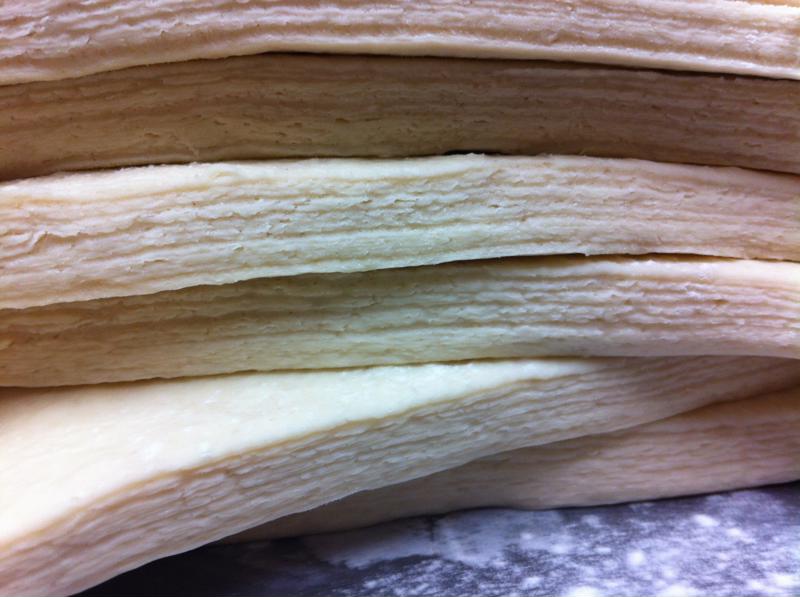If you’re an online pastry student who isn’t already cooking with laminated dough, you should be. Laminated dough is a distinctly flaky type of dough that’s used to make croissants, Danish pastries, puff pastries and more. In addition to the variety of types of pastries, this versatile dough gives bakers an opportunity to introduce a wide range of exciting flavors to their baked goods.
Folding the dough
Laminated dough gets started with a simple base, usually of water, flour and salt, and sometimes yeast and milk depending on what you’re making with the dough. Once the dough has been flattened, a layer of softened but not melted butter is applied on top. The dough is then folded to encase the butter, and then carefully rolled out again. This is called a turn. The purpose is to create a layer of butter between each layer of dough.
It’s important to refrigerate dough between each series of turns to prevent the butter from melting into the dough. The unique flakiness of laminated dough-based pastries happens when water from each layer of butter steams up, creating many separate layers of flaky dough, according to Kitchn. Therefore, you want to make sure that the butter is not allowed to melt into the dough during the folding process. The more turns you complete, the more layers of butter there and, in turn, the flakier your pastry. The tricky part, which may require some trial and error, is performing the right number of turns to get your desired level of flakiness.
 Laminated dough has alternating layers of butter and dough to create a uniquely flaky texture.
Laminated dough has alternating layers of butter and dough to create a uniquely flaky texture.Puff pastries, Danish, croissants, oh my!
The three traditional pastries made using laminated dough have subtle differences. First, there’s the base layer of dough. A puff pastry usually has the simple aforementioned base of flour, water and salt. A Danish pastry additionally incorporates yeast and eggs, the later being primarily to add a slightly chewy texture. Croissant dough incorporates yeast and milk to create a softer, more bread-like final product.
The second distinction among each of the three main types of pastry is in the number of turns. A puff pastry can have a many or as few turns as desired depending on how many crispy layers you’re trying to create. A Danish, on the other hand, should have only about three series of turns, since it tends to have less well-defined layers, and fewer of them. Finally, the sweet spot for croissants is about four turns, according to to King Arthur Flour.
Taking liberties with laminated dough
The best thing about laminated dough is that you can use it for a wide range of sweet and savory pastries that your customers will absolutely love. One creative option if to fold vegetables and cheese into a puff pastry, like in this asparagus and brie puff pastry recipe from Half Baked Harvest. Another inspiration is to bake goat cheese on top of bite-size puff pastries and then drizzle with honey and season with thyme, like in this recipe from Suburban Simplicity.
For a sweeter pastry, consider a simple chocolate and cinnamon-flavored puff-pastry twist. Alternatively, you can branch out to creative new flavor options. In the year ahead, more bakers will begin experimenting with exciting flavor options with laminated dough, such as matcha and banana split sundae, Christina Tosi told Food & Wine. How you laminate your dough and the types of flavors you use are ultimately your call. Regardless, there’s plenty of opportunity to take this classic type of dough and turn into interesting new pastries that are uniquely suited for your menu.


